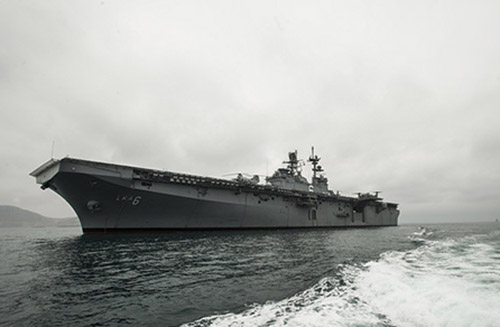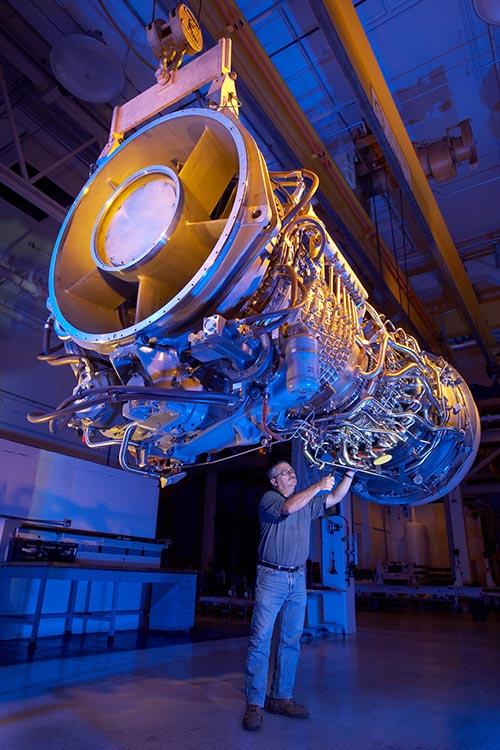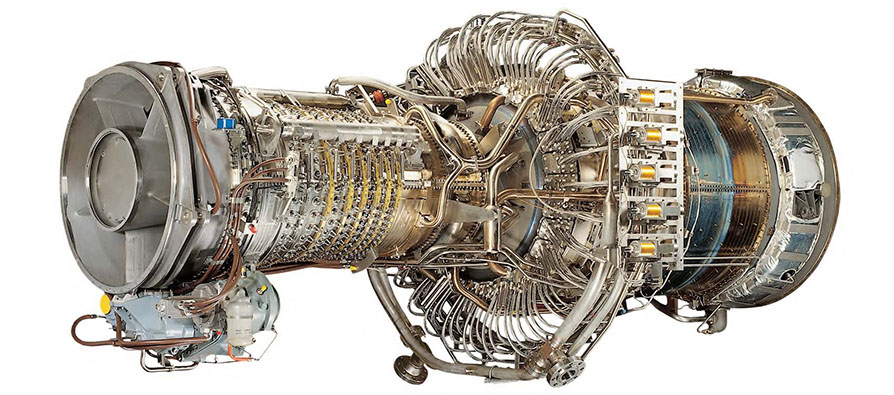Avio Aero was chosen to power the seven new PPAs (Multi-purpose Offshore Patrol Boats) which will be built by Fincantieri. The LM2500 class turbines are in service in dozens of countries for over 40 years and their evolution also powers the new FREMM and the flagship of our fleet, the Cavour aircraft carrier.
To find out more about a world that might not seem intriguing but is essential when you don't want to change from a military ship to an armed barge due to an engine failure, we interviewed engineer Corrado Crotti, the company's military sales director.
Engineer, what is the secret of this latest statement?
High performance and very high reliability, together with a low life cycle cost and versatility of use. These are the reasons for a worldwide success both in the field of naval propulsion and in the industrial sector in the Oil & Gas sector and in the generation of electricity.
The origin of this success is the CF-6 aircraft engine, currently in service in thousands of units, on aircraft such as the Boeing 747 and 767 or the Airbus A330. Starting from the "core engine" of the CF-6, General Electric Aviation developed the LM2500 turbine, which has gradually improved over the years, up to the fourth generation: the LM2500 + G4, the turbine that today equips the Italian-French frigates FREMM, but which has also been chosen for the new Multi-purpose Offshore Patrol (PPA) of the Navy.
The key to this success is the 1300 GE turbines sold for marine applications; as for the military sector: 33 military marines have adopted the LM2500 for the propulsion of their units: from corvettes, to frigates, to amphibious ships up to aircraft carriers.
 Among the most recent military programs acquired before the PPAs: the large amphibious assault ships (LHA), class America (photo) and the futuristic trimarans Littoral Combat Ship, class Independent of the US Navy.
Among the most recent military programs acquired before the PPAs: the large amphibious assault ships (LHA), class America (photo) and the futuristic trimarans Littoral Combat Ship, class Independent of the US Navy.
The LM2500 turbine is not chosen solely by those who need extremely high performance in extreme conditions - such as military applications - but also by those who pay attention to operating costs, such as fast ferries or cruise ships: among these I would like to mention the Queen Mary 2, one of the largest cruise ships in the world.
I imagine it is ridiculous to compare a turbine of the '70 and a modern one. As a technician, can you describe in which components the major developments occurred?
As we said, the LM2500 turbine starts from an extremely successful and robust architecture. On this basis, innovative technologies related to aeronautical and naval propulsion and energy production have subsequently been applied: sectors in which the GE group plays a role of absolute importance.
In this way, enormous improvements were possible in efficiency, consumption, component life and above all in performance: we went from 20 MW of the first versions to 33 MW of the LM2500 + G4.
In particular, critical components have been redesigned such as: the variable-incidence compressor blade system (Inlet Guide Vanes), the high-pressure turbine blades with the latest generation cooling system (Next-Gen HPT Blades). In addition, extensive use has been made of advanced materials, such as those with a ceramic matrix and "coating", which have allowed temperatures to rise in the turbine. Furthermore, advanced electronic systems have been developed for the control, prognostics and diagnostics of the propulsion system.
In summary, the LM2500 + G4, which equips FREMM and PPA, is a turbine with the latest generation technologies and performances, while maintaining the architecture and robustness of the previous versions.

In terms of costs and maintenance, I imagine that relying on the same turbine model is advantageous ...
The use of the same turbine model between the FREMM and PPA, among other things of the same family as the previous larger units of the Navy, allows a strong rationalization of the logistic support.
The greatest synergies concern the training of personnel, the optimization of stocks, the use of technicians and support equipment that will be completely interchangeable between different ships, without the need for duplication and, therefore, with an undoubted advantage in containing costs .
Another important aspect is that the Navy units equipped with LM2500 can count on the proximity and support of the Avio Aero site in Brindisi, a world center of excellence for the revision of GE Marine's LM class turbines.
Finally, we must not forget that the LM2500 turbines, thanks to their extreme diffusion - about 200 are produced per year - will not have problems of assistance and availability of spare parts in the long term.
What are the other General Electric naval turbines?
GE Marine can count on a product portfolio that can cover a range of power ranging from 20 to 47 MW, in order to better adapt to customer needs.
In addition to the various LM2500 models, the marine version of the LM6000 turbine has recently been added. The latter is always derived from the CF-6 aircraft engine and maintains the same architecture and design philosophy as the LM2500, but can develop power up to 47 MW. The LM6000 has found widespread success in the industrial sector with over 1100 units in service, and has proven reliability and robustness in challenging environments such as off-shore platforms or desert pumping stations.
In addition, GE Marine also has a small 6000 horse-derived engine, the LM500, which is used on some fast patrol models.
Do the savings remain in the high or low pass in the power category?
The different turbines of the LM class maintain the same philosophy of use and maintenance, as well as the commonality of part of the support equipment and spare parts. For this reason it is extremely easy for crews and technicians to switch from LM2500 to LM6000.
As proof it should be considered that precisely to exploit the synergies in the logistics chain and the simplicity of referring to a single supplier, the most important world operators in the Oil & Gas sector use the LM2500 and LM6000 turbines together.
I would like to conclude by recalling how the choice of GE LM2500 turbines for propulsion of PPAs (photos), fully reflects, in the spirit and in the letter, the requirements of the financing provision of the Naval Program 2014, approved by Parliament.
It is in fact the only option that maximizes the national industrial return, both in quantitative and qualitative terms: important parts of the turbine are produced in Italy and the design of the entire propulsion module is a distinctive excellence of Avio Aero. This choice also guarantees the development of dual technologies, in naval propulsion but also in the generation of electricity. Finally, the export opportunities of PPAs increase, both because most of the potential customers already employ units with GE turbines and will be able to develop those synergies in the logistics chain described above, both because in each continent there is at least one audit and support center. The economies of scale deriving from the foreign market represent undoubted benefits for the development of the Country System.

(photo: Online Defense / Avio Aero / US Department of Defense)












